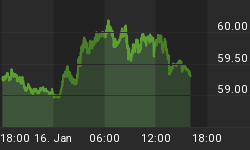The U.S. Dollar traded mixed against most major currencies with the exception of the Canadian Dollar and New Zealand Dollar. Traders seemed to shy away from riskier currencies throughout the day despite a stronger equity market. Some of this weakness was attributed to end of the week profit-taking, but many traders believe confusion over whether to follow the economic reports or the bank stress test rumors is encouraging investors to pare positions.
The USD CAD was a big loser on Friday. The Canadian Dollar strengthened earlier in the session when the government released a better than expected jobs report for June. This news is a strong sign that the Bank of Canada will raise interest rates a second time in late July. Since the U.S./Canadian has been range bound for several months, traders see this market as one with great opportunity because of the possibility of a breakout move.
Early weakness in global equity markets helped to pressure the Euro and the commodity-linked currencies which they never recovered from despite a turnaround in U.S. equity markets. Risk sentiment seems to have shifted overnight with investors becoming more risk averse. Profit-taking and position squaring ahead of the start of the U.S. earnings season appeared to be the catalyst behind Friday morning's early weakness.
The Euro is trading inside of major retracement zone at 1.2609 to 1.2782. The current chart pattern suggests a developing daily closing price reversal top. This could lead to the start of a 2 to 3 day break. At this time 1.2609 is holding as support. A failure to hold this level could trigger the start of an acceleration to the downside. Should a reversal top form, look for a short-term correction to 1.2400.
The movement in the GBP USD signaled a change in trend to down on the daily chart following a break through the main bottom at 1.5080. The current chart pattern suggests the start of a correction to 1.4734 to 1.4615 is possible.
Traders have been pressuring the British Pound since early Thursday when a drop in home prices was announced. This was an indication that the economy is still weak. Also on Thursday the Bank of England announced that interest rates would remain unchanged at historically low levels. Investors may have decided to pare positions after a strong rally in the Sterling because of uncertainty about how the new government and the Bank of England will work together.
The new government is pushing financial austerity measures designed to cut costs and possibly raise taxes while the central bank is trying to keep the recovery going. Holding interest rates low may encourage expansion but may also lead to higher inflation. The government and the central bank have to find a way to coordinate their efforts so that the country's finances stabilize while maintaining positive growth. This is the challenge that could be causing worries amongst traders.
With the start of earnings season next week, there is the strong possibility that U.S. equity markets will rally. This should underpin the USD JPY. Wednesday's reversal to the upside is also a strong sign that this currency pair is reading for a sharp short-covering rally.
Technically the Dollar/Yen chart suggests there is room to the upside with 90.97 a possibility. The strength in a U.S. stock market rally will determine how high this currency pair moves.
A shift toward higher risk assets is likely to keep down side pressure on the Japanese Yen as investors renew their interest in the carry trade.
The Australian Dollar finished the week sharply higher. The Aussie got a boost early in the week when the Reserve Bank of Australia announced that interest rates would remain unchanged this month but that the policymakers will not hesitate to raise rates despite concerns over growth prospects in China.
The strong close in the Aussie has put the market in a position to rally higher next week. The first upside target will be the old main top at .8858. A move through this level will turn the main trend to up on the daily chart and should trigger an acceleration to the upside.
This past week showed that appetite for risk is back. This means that a rally next week in the equity markets is likely to continue to underpin the Euro and the commodity-linked currencies while pressuring the Japanese Yen. Next week is also the start of earnings season which could mean an increase in volatility due to rapid shifts in the U.S. stock markets.
Although the European bank stress test results are not due to be released until July 23rd, Euro traders are still unconcerned about what these results will yield. A comment by European Central Bank President Trichet on Thursday about banks having to raise capital could weigh on traders minds, thereby slowing down the pace of the gains in the Euro.
















